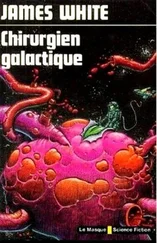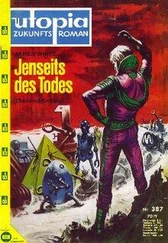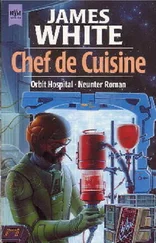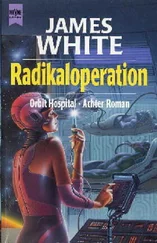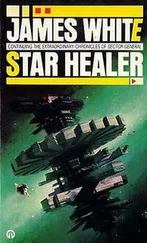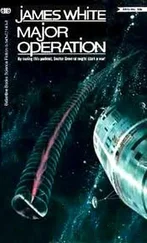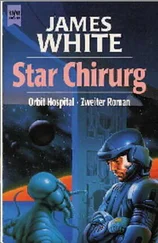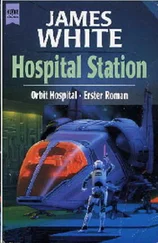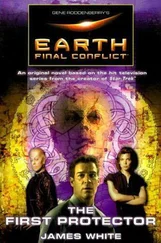Conway admitted to anomalies in the system, but these could be blamed on the lack of imagination by its originators. One of the species present in the observation gallery was a case in point — the AACP type with its vegetable metabolism. Normally the A prefix denoted a water breather, there being nothing lower in the system than the piscatorial life forms. But the AACPs were vegetables and plants had come before fish.
… Great stress is laid on the importance of a rapid and accurate classification of incoming patients, who very often are in no condition to furnish this information themselves,” Conway went on. “Ideally, you should reach a stage of proficiency which will enable you to rattle off a classification after a three-second glimpse of an e-t foot or section of tegument.
“But look there,” he said, pointing.
Over the control desk three screens were alight, and adjacent indicators added detail to the information contained in the pictures. The first showed the interior of Lock Three, which contained two Earth-human orderlies and a large stretcher-carrier. The orderlies wore heavy duty suits and anti-gravity belts, which didn’t surprise Conway at all because Lock Three and its associated levels were maintained at five Gs with pressure to match. Another screen showed the exterior of the lock with its transfer servo-mechanisms and the ship about to make contact, and the third picture was being relayed from inside the ship and showed the patient. Conway said, “You can see that it is a heavy, squat life-form possessing six appendages which serve both as arms and legs. Its skin is thick, very tough and pitted all over, and is also encrusted in places with a dry, brownish substance which sometimes flakes off when the patient moves. Pay particular attention to this brown substance, and to features which seem to be missing from the body. The tell-tales show a warm-blooded, oxygen-breathing metabolism adapted to a gravity pull of four Gs. Would one of you like to classify it for me?”
There was a long silence, then the Creppelian AMSL twitched a tentacle and said, “FROL, sir.”
“Very close,” said Conway approvingly. “However, I happen to know that this being’s atmosphere is a dense, nearly opaque soup, the resemblance to soup being increased by the fact that its lower reaches are alive with small airborne organisms which it feeds upon. You missed the fact that it has no eating mouth but absorbs food directly via the pitting in its skin. When traveling in space, however, the food has to be sprayed on, hence the brownish encrustation—”
“FROB,” said the Creppelian quickly.
“Correct.”
Conway wondered whether this AMSL was a little brighter than the others or just less shy. He made a mental note to keep an eye on this particular batch of trainees. He could use a bright assistant in his own wards.
Waving goodbye to the furry receptionist, Conway gathered his flock about him again and headed them toward the FGLJ ward five levels below. After that came other wards until Conway decided to introduce them to the complex, far flung department of the Hospital without whose constant and efficient working the tremendous establishment of Sector General could not have functioned and the vast multitude of its patients, staff and maintenance personnel could not have lived.
Conway was feeling hungry, and it was time he showed them where they all ate.
AACPs did not eat in the normal manner but planted themselves during their sleep period in specially prepared soil and absorbed nutriment in that way. After seeing them settled he deposited the PVSJ in the dim, noisome depths of the hail where the chlorine-breathers ate, and this left him with the two DBLFs and the AMSL to dispose of.
The largest dining hail in the hospital, the one devoted to oxygen breathers, was close by. Conway saw the two Kelgians placed with a group of their own species, then with a look of hungry yearning toward the Senior’s enclosure he hurried out again to take care of the Creppelian.
To reach the section catering for the water-breathers necessitated a fifteen minute walk along some of the busiest corridors of the hospital. Entities of all shapes and sizes flapped, undulated and sometimes walked past them. Conway had become inured to being jostled by elephantine Tralthans and having to step carefully around the fragile, diminutive LSVOs, but the Creppelian was like an armor plated octopus walking on eggs — there were times when the AMSL seemed afraid to move. The bubbling sounds from its suit had increased noticeably, too.
Conway tried to make it relax by getting it to talk about its previous hospital experience, but without much success. Then suddenly they turned a corner and Conway saw his old friend Prilicla coming from a side ward …
The AMSL went “Wheep!” and its eight legs threshed frantically into reverse. One of them swung heavily into the back of Conway’s knees and he sat down violently. The octopoid took off down the corridor, still wheeping.
“What the blazes …!” said Conway, with what he thought later was commendable restraint.
“This is my fault entirely, I frightened it,” said Prilicla as it hurried up. “Are you hurt, Doctor?”
“You frightened it …
The gentle, spider-like creature from Cinruss apologized, “Yes, I’m afraid so. The combination of surprise and what seems to be a deeply rooted xenophobic neurosis caused a panic reaction. It is badly frightened but not completely out of control. Are you hurt, Doctor?”
“Just my feelings,” Conway growled, scrambling to his feet and going after the fleeing Creppelian, who was now out of sight and very nearly out of earshot.
His progress in the wake of the AMSL became a rapid zigzag that was half sprint and half waltz. To his superiors he called “Excuse me!” and to equals and inferiors he bawled “Gangway!” Almost at once he began to overtake the AMSL, proving once again that as an efficient means of locomotion two feet were much better than eight, and he was just drawing level when the being trapped itself neatly by turning into a linen storeroom. Conway skidded to a halt outside the still open door, went in and closed it firmly behind him.
As calmly as shortage of breath would allow he said, “Why did you run away?”
Words poured suddenly from the AMSL. The Translator filtered out all the emotional overtones but from the sheer rapidity of its speech he knew that the Creppelian was having the equivalent of hysterics, and as he listened he knew that Prilicla’s emotional reading had been right. Here was a xenophobic neurosis and no mistake.
O’Mara will get you if you don’t watch out, he thought grimly.
Given even the highest qualities of tolerance and mutual respect, there were still occasions when inter-racial friction occurred in the hospital. Potentially dangerous situations arose through ignorance or misunderstanding, or a being could develop xenophobia to a degree which affected its professional efficiency, mental stability, or both. An Earth human doctor, for instance, who had a subconscious fear of spiders would not be able to bring to bear on a Cinrusskin patient the proper degree of clinical detachment necessary for its treatment. And if one of the Cmrusskins, like Prilicla, were to treat such an Earth-human patient …
It was O’Mara’s job as Chief Psychologist to detect and eradicate such trouble-or if all else failed, to remove the potentially dangerous individuals-before such friction developed into open conflict. Conway did not know how O’Mara would react to a hulking great AMSL who fled in panic from such a fragile creature as Dr. Prilicla.
When the Creppelian’s outburst began to ease off Conway raised his hand for attention and said, “I realize now that Dr. Prilicla bears a physical resemblance to a species of small, amphibious predator native to your home world, and that in your youth you experienced an extremely harrowing incident with these animals. But Doctor Prilicla is not an animal and the resemblance is purely visual. Far from being a threat you could kill Prilicla if you were to touch it carelessly.
Читать дальше

